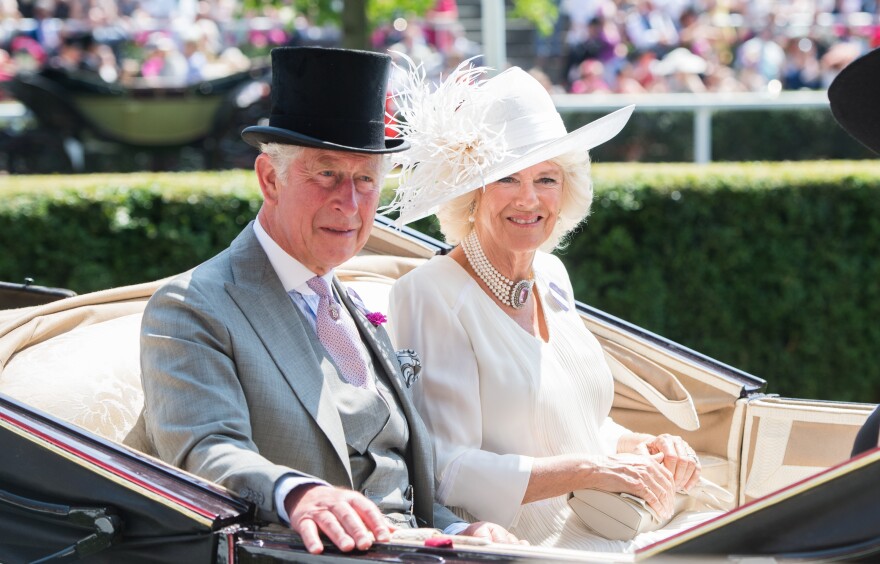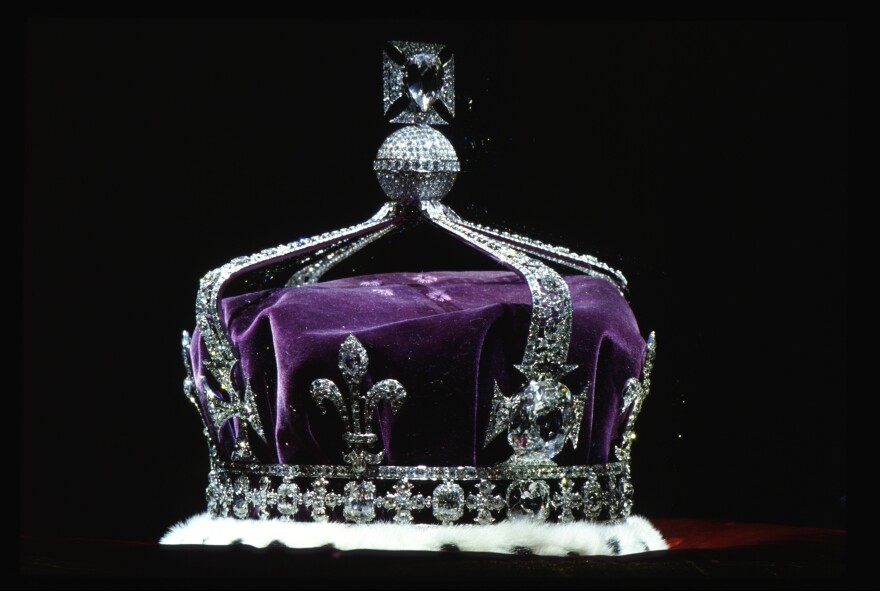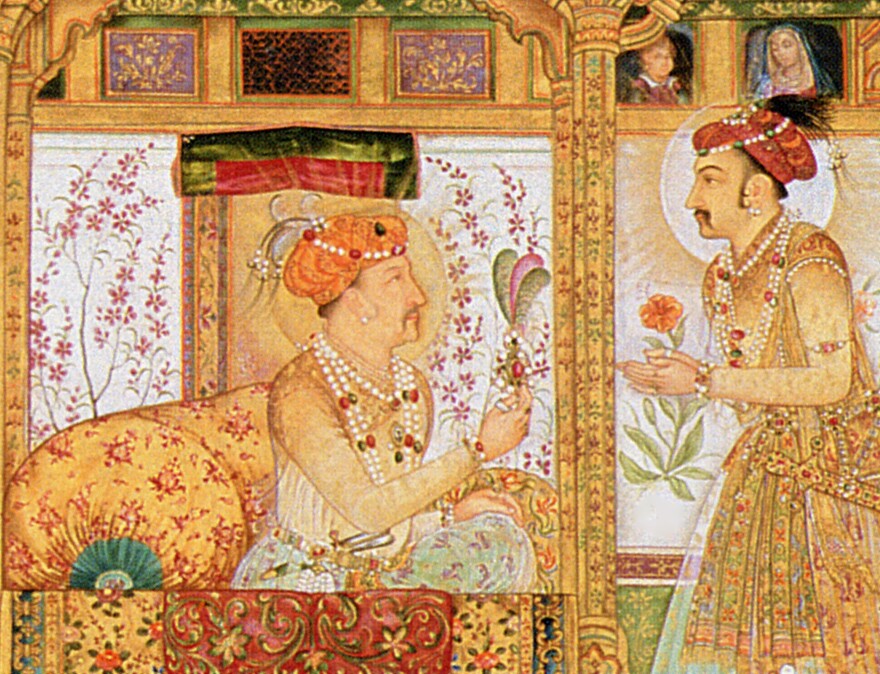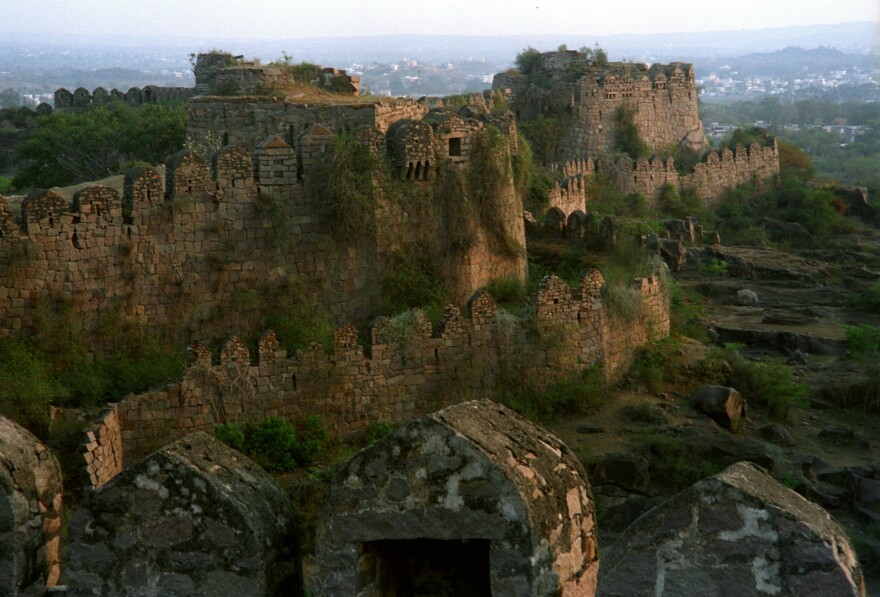LONDON — Of all the glittering British crown jewels, one will be conspicuously absent at King Charles III's coronation: the Kohinoor diamond.
Legend has it the 105-carat diamond — whose name means "mountain of light" in Persian — was found on a bank of the holy Krishna River in southern India at least 800 years ago. From there, the story goes, it spent centuries hidden inside a golden statue at a Hindu temple.
It passed through Mughal, Persian, Afghan and Sikh empires before ending up in the hands of Queen Victoria in the mid-19th century.
Along the way, people came to believe it was cursed. Calamity is said to have struck many a male royal who wore it. One strapped the diamond to his bicep. Another folded it into his turban. Most met grisly deaths — murdered, betrayed, defeated.

So it's thought that only women — especially queen consorts — can wear the Kohinoor safely. Elizabeth, the wife of King George VI, wore it to her coronation in 1937, and again to her daughter Elizabeth II's in 1953. (There is no known record of Queen Elizabeth II wearing the diamond).
According to tradition, King Charles III's wife Camilla would be the next to wear the jewel at this weekend's coronation ceremony. But she will wear a different crown, one with 2,200 smaller diamonds.

That's because the Kohinoor has become a focus of anti-colonial anger. India wants the diamond back.
And it's not alone. So do several other nearby countries — including Iran and Afghanistan — whose own royals and rulers, over the centuries, possessed the diamond. For now, though, the British royal family has no intention of parting with the giant gemstone.
The museum where it's kept on display, in the Tower of London, is a popular destination for South Asian tourists.
"I've learned my best swears in front of the Kohinoor, in three different languages," says historian Anita Anand, the coauthor of Kohinoor: The History of the World's Most Infamous Diamond. "Every time you bring someone over from India or Pakistan, they just swear at it! Swear at the fact that it's here."
After Queen Elizabeth died last year, the Indian government said it has repeatedly raised the issue of repatriating the Kohinoor with the British government.
And this winter, Buckingham Palace made an announcement: The royal family had decided to leave the controversial gem out of the coronation ceremony for Charles and Camilla.
For now, it remains locked in the Tower of London, advertised as a "symbol of conquest" — firmly on British soil.

A diamond the size of a coconut
Centuries before humans began mining diamonds deep underground, gems were only discovered after working their way up to the Earth's surface. And one of the places they seemed to do that most was the area of the Golconda alluvial mines, in southern India.
That's where, 800 or so years ago, someone went to take a bath in the Krishna River and apparently stumbled upon the biggest diamond then known in the world. Legend has it that it was the size of a coconut.
"People used to go to the rivers and take baths, and there were no soaps or cosmetics at the time, so they used the wet clay next to the riverbanks and applied it to their bodies," explains Mohan Devarapalli, 32, who gives Kohinoor-themed tours in southern India. "So while [collecting] the clay, they found the diamond."
They considered it a gift from the holy river and took it to their rulers, the 12th century Hindu kings of the Kakatiya dynasty. At the time, India was full of warring states, and the kings needed to keep their diamond safe.
So they hid it in plain sight — inside the eye socket of a large golden statue of the Hindu goddess Durga, in a temple that's still in use today, on the edge of a lake in the modern-day city of Warangal. One eye was glass, the other was diamond. But they looked identical.
"One of the [goddess'] eyes was the diamond, which no one knew — except the kings — because it looked like glass. Even the priests, they would not have known it," Devarapalli says. "It was a top-secret place to hide the diamond."
It worked — for a couple of centuries, at least.
The diamond becomes an object of violent conquest
Rumors spread about this giant diamond guarded by a goddess. And when the Kakatiya dynasty was vanquished, around the 14th century, invaders from the north pillaged all the temples in the region and captured the gemstone.
"It's the nearest thing to the ring of power in Lord of the Rings. Whenever it goes, it stirs up anger, greed, murder and bloodshed!" says historian William Dalrymple, Anand's coauthor.
Experts have confirmed from the diamond's geology that it did come from the Golconda area of southern India.

"But beyond that, its history is enormously disputed," Dalrymple says. "There's almost no record of it until it's on the top of the Peacock Throne, which is built in the 1640s by Shah Jahan, who's the same guy who built the Taj Mahal."
By the 17th century, much of India had been conquered by Muslim emperors, known as the Mughals. One of them, Shah Jahan, embedded the diamond in the Peacock Throne, his seat of power — which eventually was captured by another warlord with a weakness for diamonds.
"An Iranian leader called Nadir Shah defeats the enormous Mughal army. From Iran, [the diamond] then enters the hands of Ahmad Shah Abdali, who is the founder of Afghanistan," Dalrymple explains. "So the Afghans feel equally strongly that this is their stone."
Around this time, the diamond came be known as the Kohinoor. It was also around this time when legends of curses started to mount.
"In Indian astrology, a pure man without sin — a great man — can wear a diamond without a problem. But anyone who is flawed, or any diamond which is flawed, can bring terrific bad luck," Dalrymple says. "This whole mythology of cursed diamonds actually begins in Indian astrological texts."
By the time the British arrived on the scene — first as the East India Company in the 17th century, and then as colonial rulers — the diamond was only worn by women.
That suited Queen Victoria just fine.
A colonial gift for Queen Victoria
In the mid-19th century, British diplomats befriended a 10-year-old Punjabi Sikh prince, the Maharaja Duleep Singh, who'd inherited the Kohinoor. They took the boy's diamond as part of an 1849 treaty marking the end of the second Anglo-Sikh war — and presented it to Queen Victoria. She wore it in a dangling bracelet, and later had a giant brooch made to hold the diamond, which she wore to sit for a famous portrait.
That loss of the Kohinoor is still felt — memorialized — in India to this day.

In a sound-and-light show for tourists at the 11th century Golconda Fort in the southern city of Hyderabad, where the Kakatiya kings once ruled, the recorded voice of Bollywood's biggest star, Amitabh Bachchan, extolls the Kohinoor's brilliance and bemoans where it is today.
"The Kohinoor is still in Britain. This is just a replica," Bachchan's voice bellows in the darkness, as a giant hologram of a diamond is projected onto one of the fort's walls.
Tourists shake their heads.
"The British never apologized about anything," says Saudamini Sharma, 25, touring the fort. "They're the ones who came and tried to, you know, quote unquote 'civilize people.' But civilized people don't steal — don't take away stuff and never return it."
India's claim to the Kohinoor
There are growing calls to return the Kohinoor. But to where? Over the centuries, it's been held in what is now India, Pakistan, Iran and Bangladesh. Even the Taliban claim it's theirs.
From the return of Jewish art looted by the Nazis to colonial artifacts in British museums, Western governments in recent years have started to address questions of ownership of archaeological and cultural heritage. A London museum recently returned the Benin Bronzes to Nigeria. Greece is asking the British Museum to return the Elgin Marbles.

But the U.K. government and royals have rarely commented on the Kohinoor. In 2010, then-Prime Minister David Cameron, asked about it on a trip to India, said returning the diamond would set a dangerous precedent for British institutions.
"What tends to happen with these questions is that if you say yes to one, you suddenly find the British Museum would be empty!" Cameron told New Delhi Television. "I think I am afraid to say, to disappoint all your viewers, it is going to have to stay put."
Meanwhile, the British sell tickets (currently, about $37 for adults) to see the Kohinoor — and have done so since 1851, when the diamond was the star attraction at the World Exhibition at the Crystal Palace in London.

It was for that exhibition that the British royals had the diamond cut down — lopped off at least 85 carats. The diamond had already been whittled down from its legendary coconut size over the centuries, as part of efforts to eliminate imperfections or possibly even steal parts of it. In Victorian Britain, the taste was for "brilliant" cut diamonds, which required a reshaping of the gem to refract more light.
"To Indians, it's actually a perfect, perfect metaphor for what India went through: It was reshaped and re-cut and diminished into something that suited a British palate and British needs," Anand says.
"We [in Britain] don't really learn about the history of empire! It's painted as if it's something very long ago, not really interesting — and yet it shapes the world we live in today," Anand says. "It's always glimmered in my life. If you are a British Asian, you know about the Kohinoor."
Last year, India and Pakistan celebrated 75 years since winning their freedom from the British crown. But for many, the story is incomplete as long as the British crown still has their diamond.
Copyright 2023 NPR. To see more, visit https://www.npr.org.








